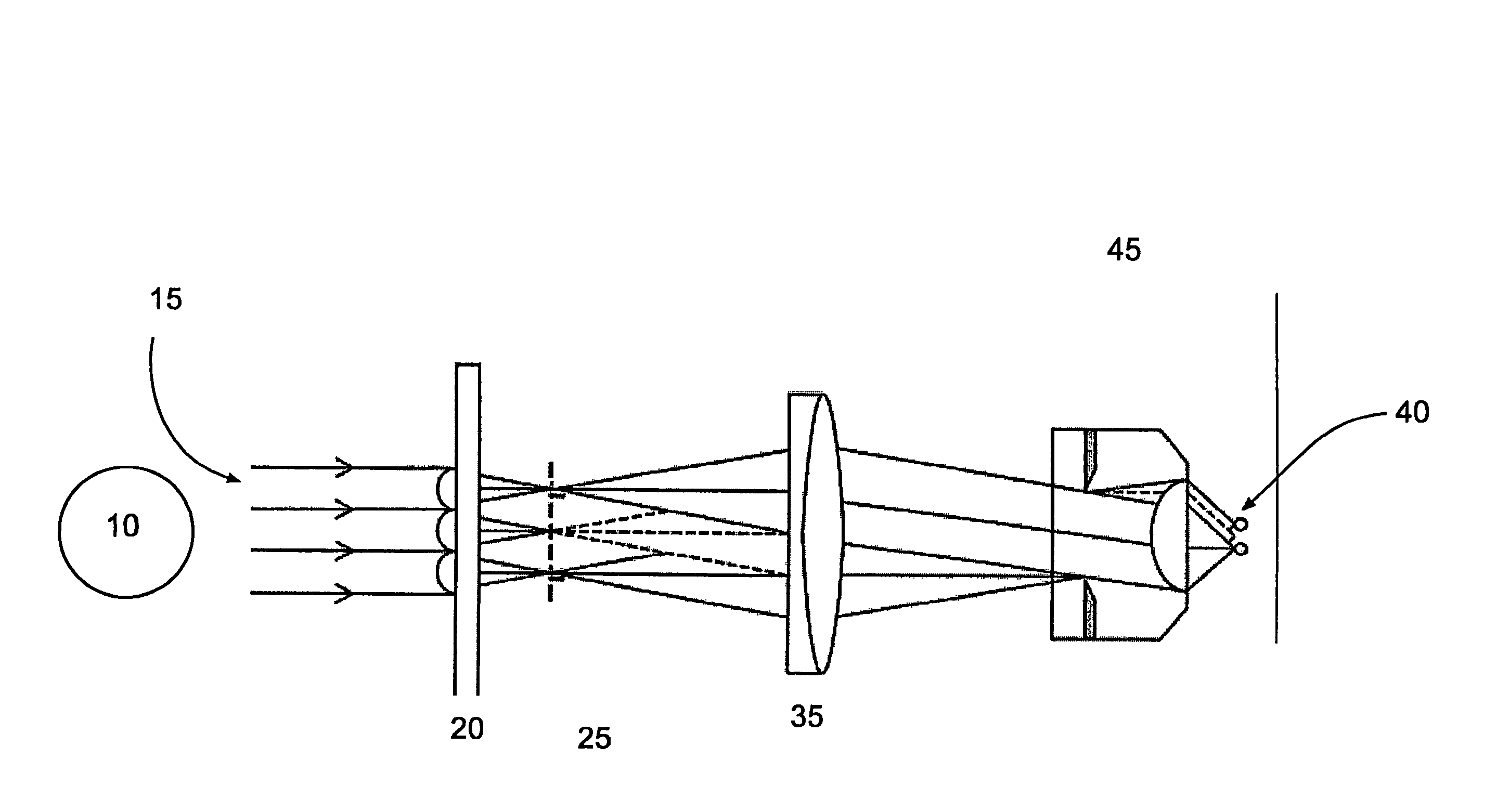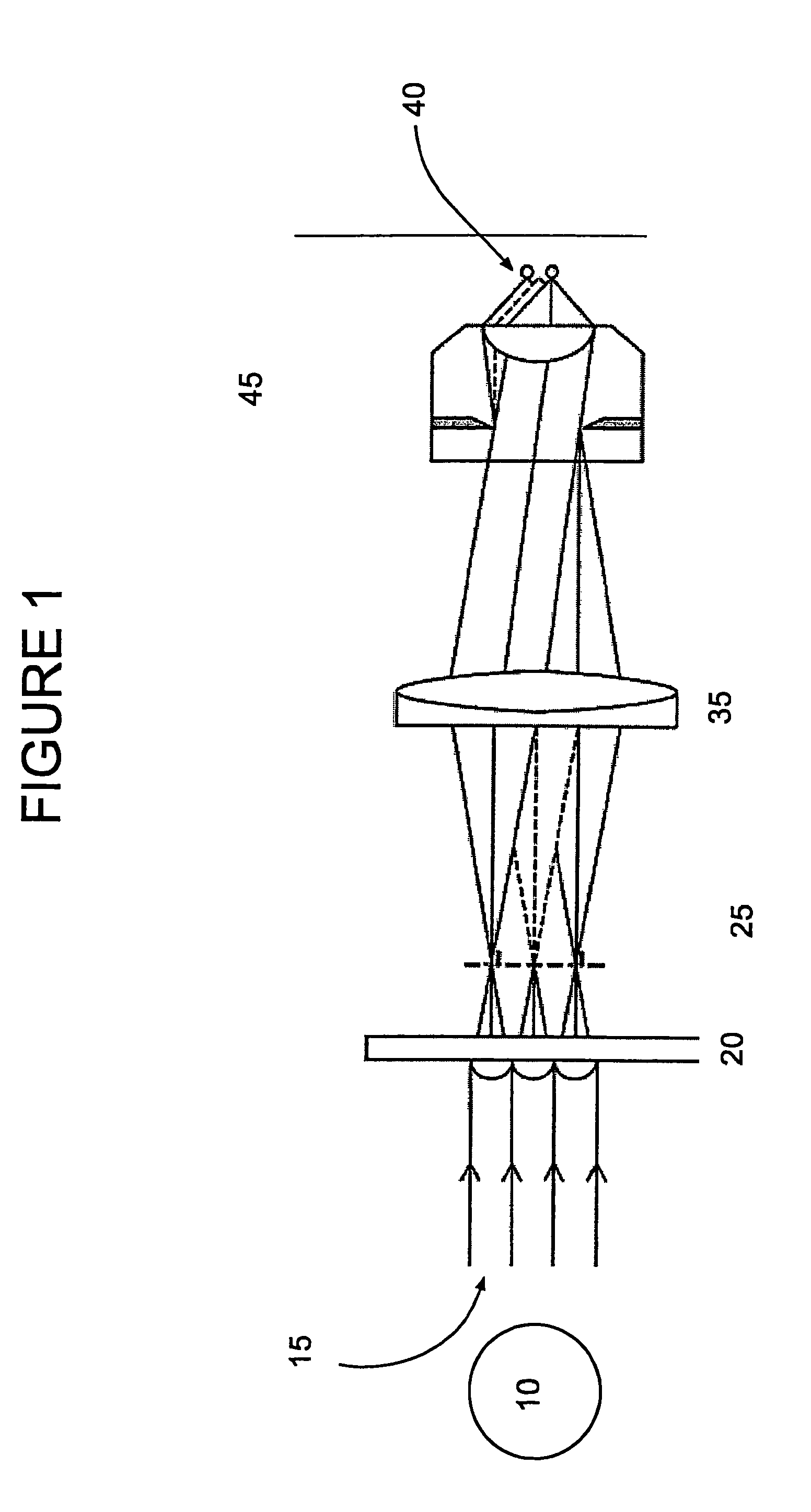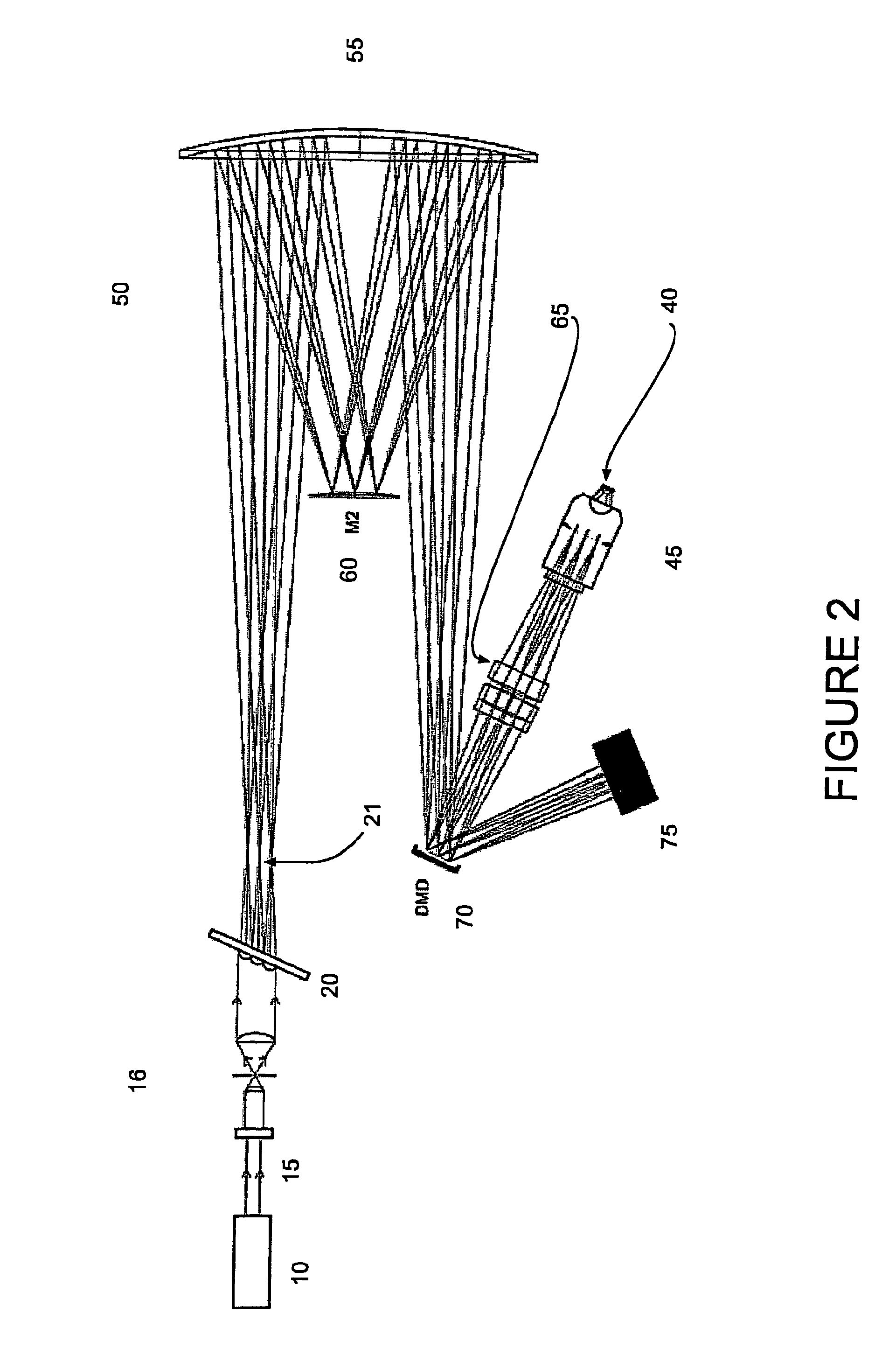Optical array device and methods of use thereof for screening, analysis and manipulation of particles
a technology of optical arrays and filters, applied in the direction of optical radiation measurement, luminescent dosimeters, instruments, etc., can solve the problems of time-consuming and laborious to isolate a sufficient number of cells, and the current optical array techniques and methodologies are not readily extended to create multiple beams, etc., to achieve simple, straightforward, and easy to address
- Summary
- Abstract
- Description
- Claims
- Application Information
AI Technical Summary
Benefits of technology
Problems solved by technology
Method used
Image
Examples
examples
[0091]The optical system has been designed so that it can control individual traps and be integrated into a microfluidics system. In this design the primary multiple focal points matrix is formed and relayed into a specimen cell so that the entire trap formation is tied to the optical instrument and not to the specimen cell.
[0092]A simplified schematic of the optical system is provided in FIG. 1. A collimated beam of light enters a microlens array. The laser wavelength may be any from UltraViolet (UV) up to Near InfraRed (NIR). If the matrix of focal points formed by the microlens array is placed at the image plane of a microscope, it will be relayed onto an object plane. The microscope objective presents a very high NA lens, which is a necessary condition for efficient 3D trapping. The tube lens should be telecentric, which means it should present low aberrations for bundles of light that have their chief rays parallel to lens optical axis. In this case, the collimated pencils of l...
PUM
 Login to View More
Login to View More Abstract
Description
Claims
Application Information
 Login to View More
Login to View More - R&D
- Intellectual Property
- Life Sciences
- Materials
- Tech Scout
- Unparalleled Data Quality
- Higher Quality Content
- 60% Fewer Hallucinations
Browse by: Latest US Patents, China's latest patents, Technical Efficacy Thesaurus, Application Domain, Technology Topic, Popular Technical Reports.
© 2025 PatSnap. All rights reserved.Legal|Privacy policy|Modern Slavery Act Transparency Statement|Sitemap|About US| Contact US: help@patsnap.com



